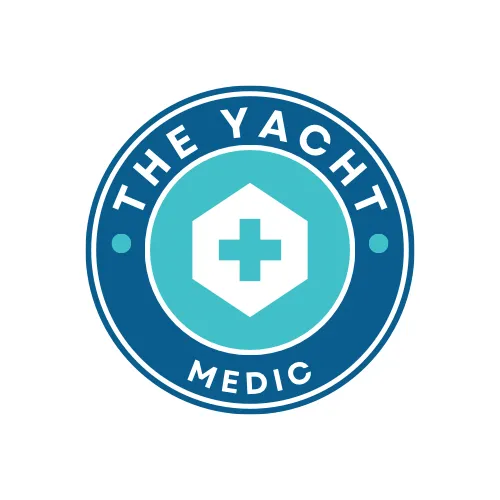See Our Latest Blogs
Beyond Boundaries, Beyond Rescue
Mastering Self Reliance At Sea

Death At Sea
Death at Sea: What Happens When the Worst Happens Onboard
Written with respect for maritime tradition, medical protocols, and human dignity.
Trigger Warning: This post addresses death and may be confronting for some readers.
Yesterday, we lost a guest onboard.
Despite everything—the crew’s fast response, early defibrillation, and remote medical support—we couldn’t save him. He suffered a sudden heart attack. CPR was started immediately and continued for over 38 minutes.
At sea, these decisions don’t come easily. We push as hard and as long as we can. But when there’s no response, no shockable rhythm, and no sign of life, the hardest call must be made. The doctor advised us to stop. The final decision fell to the captain.
It was a confronting, human moment—one we don’t talk about enough in this industry.
So, what happens next?
How do we care for the person who has died, the crew who fought to save them, and everyone left onboard?
Step 1: Cease Resuscitation and Declare Death
It’s the call no captain or crew member ever wants to make. But once all efforts have failed—CPR, defibrillation, remote advice—someone dies onboard.
According to the Ship Captain’s Medical Guide and the Skipper’s Medical Emergency Handbook, in international waters, the Master of the vessel holds the authority and responsibility to declare death when no doctor is present.
When to stop resuscitation:
No breathing or heartbeat
Fixed, dilated pupils
No response to prolonged, high-quality CPR (30+ minutes)
Remote medical support confirms futility
Signs of lividity or rigor mortis (if present)
Record the time of death and circumstances clearly in the ship’s log.
Step 2: Laying Them Out — Dignity in Death
Here is where leadership and humanity matter most.
Before moving straight to cold storage, stop. Care for the deceased as we would on land—in nursing, this is sacred work. It preserves dignity, helps the crew, and acknowledges that this person mattered here.
Where possible:
Remove medical equipment (defib pads, tubes, IV lines)
Gently wash the body—remove blood, sweat, medical residue
Close the mouth naturally; support the jaw if needed
Place cotton wool in cheeks or gently tape the mouth closed (if appropriate)
Tape the eyes closed if they remain open
Dress the body in clean clothes or uniform
Lay them out respectfully—hands by sides or across the chest
If possible, place the body in a cool, quiet, air-conditioned cabin, allowing crew or family to say goodbye
This isn’t legal protocol—it’s human protocol.
Step 3: Secure and Preserve the Body
After allowing time for final respects:
Wrap the body in a clean sheet or body bag
Move to the coolest area available (refrigeration if possible, without food contamination)
Handle with care and dignity at all times
Note: Burying at sea is almost never appropriate on a superyacht and should only occur if legally directed by maritime authorities.
Step 4: Notify Authorities
Begin official reporting:
Contact your medical provider (MSOS, THEMIS, or equivalent)
Notify the owner’s representative, agent, and family
Inform port authorities at your next destination
Follow flag state requirements for death reporting
Step 5: Support Your Crew
The psychological impact of a death onboard is profound. Do not overlook it. Arrange for:
Immediate debriefing
Psychological first aid
Time off duty for those directly involved
Ongoing monitoring, especially before re-engaging with guests or family
A Final Word: The Captain’s Burden
You are responsible—for the living, and now the dead.
It is one of the heaviest duties a captain will ever carry.
Handled well, it becomes one of the most important acts of leadership and humanity you’ll perform.
Prepare your crew:
Practice drills
Carry body bags, cotton wool, clean sheets
Know the legal and procedural steps
But most importantly—know the spirit of what’s required
At sea, closure matters.
Disclaimer:
This blog is for educational purposes only and not medical advice. Always follow your yacht’s medical protocols and consult your telemedicine provider or doctor when dealing with death or any medical issue at sea.
P.S. This scenario is fictional. The image used was AI-generated—no real yacht, guests, or crew were involved.
Sail Safely with Expert Medical Training
Resilience & Psychological First Aid For Yachts

Resilience First Aid (RFA) is a proactive approach to mental health, designed to equip yacht crew with the skills to prevent burnout, manage stress, and strengthen mental resilience.
Psychological First Aid (PFA) is an
immediate, compassionate response to mental distress after a crisis,
support each other emotionally, reduce trauma impact, and promote recovery
after major incidents.
Medical First Aid & Planning for Yachts

This course is designed to equip yacht owners & crew with essential first aid skills and the knowledge to set up a well-stocked and effective medical kit. Whether you're preparing for remote cruising or need to update your onboard medical resources, this course ensures you’re ready for any medical emergency.
Yachts operate in remote locations, often far from immediate medical help.
Adventure Preparation for Remote Environments

When you venture into remote environments preparation is everything. The Adventure Ready Program equips leaders, yacht crew, expedition teams, and outdoor professionals with the medical skills, resilience training, and leadership strategies
needed to handle emergencies, adapt under pressure, and thrive in extreme environments.
Be Prepared, Stay Safe & Protect Your Crew
© The Yacht Medic - All Rights Reserved,
Photography & Media by Oli Riley Photography

info@the-yacht-medic.com
+34610120242
Palam de Mallorca, Spain
